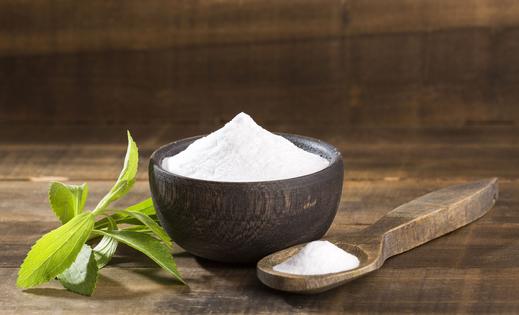Environmental Nutrition: How sweet are stevia's benefits?
Stevia is a popular non-nutritive sweetener made from the Stevia rebaudiana plant. It is native to Paraguay, Brazil and Argentina, however it is now cultivated throughout the world. The leaves have been used for centuries by native people to make sweet teas, or to sweeten other foods. Steviol glycosides, constituents of stevia, are "generally recognized as safe" (GRAS) by the Food and Drug Administration (FDA), and may be used as a food additive sweetener. However, stevia leaf and crude stevia extracts are not considered GRAS and do not have FDA approval for use in food.
Background
This non-nutritive sweetener is created through a process of extraction, filtration and dehydration -- resulting in a product that is, ounce for ounce, 200 to 350 times sweeter than table sugar. In addition to being a flavor enhancer, stevia is frequently consumed for various other purposes. Because it contains virtually zero calories, it is often used to assist weight loss. However, there is insufficient research supporting this claim. In addition, some findings have suggested that stevia may have a negative effect on appetite regulation. Stevia does not appear to have a negative effect on blood glucose levels and is recognized as safe for individuals with diabetes. In fact, some studies have suggested the compounds in stevia may be beneficial for improving diabetes regulation. A small study in patients with Type 2 diabetes found that a large dose of stevia given with a test meal improved insulin response by 40 percent compared to the control. Some studies have also reported stevia to help improve cholesterol levels and blood pressure, however additional research is needed to determine its potential cardiovascular, as well as other health benefits.
Benefits
Stevia requires lower inputs of land, water and energy to produce the same amount of sweetness found in other natural sweeteners. A carbon and water footprint assessment from one of the largest stevia producers, using sweetness equivalence for comparison, found an 82 percent reduction in carbon footprint for stevia compared with beet sugar, and a 64 percent reduction compared with cane sugar.
The bottom line
Stevia is available in powder and liquid forms and can be found in a variety of packaged foods and drinks.It is heat stable and can be used in baked or heated products. Because it can have a slightly bitter taste, stevia is sometime blended with other sweeteners or sugar alcohols in an effort to improve the flavor. Although long-term studies are needed, stevia appears to be well tolerated, without significant adverse effects, and can be a safe alternative to sugar and other sweeteners.
(Environmental Nutrition is the award-winning independent newsletter written by nutrition experts dedicated to providing readers up-to-date, accurate information about health and nutrition in clear, concise English. For more information, visit www.environmentalnutrition.com.)







